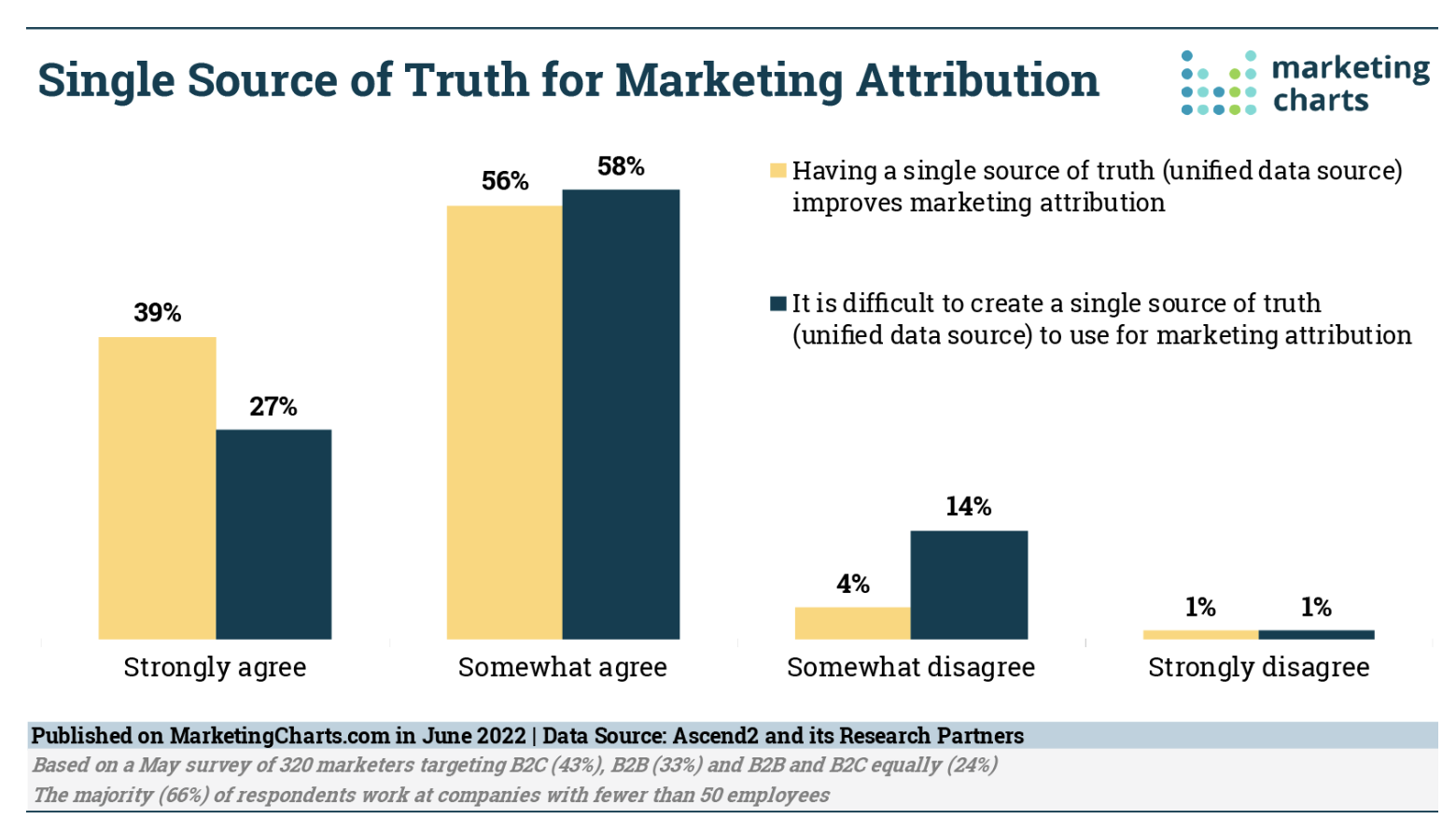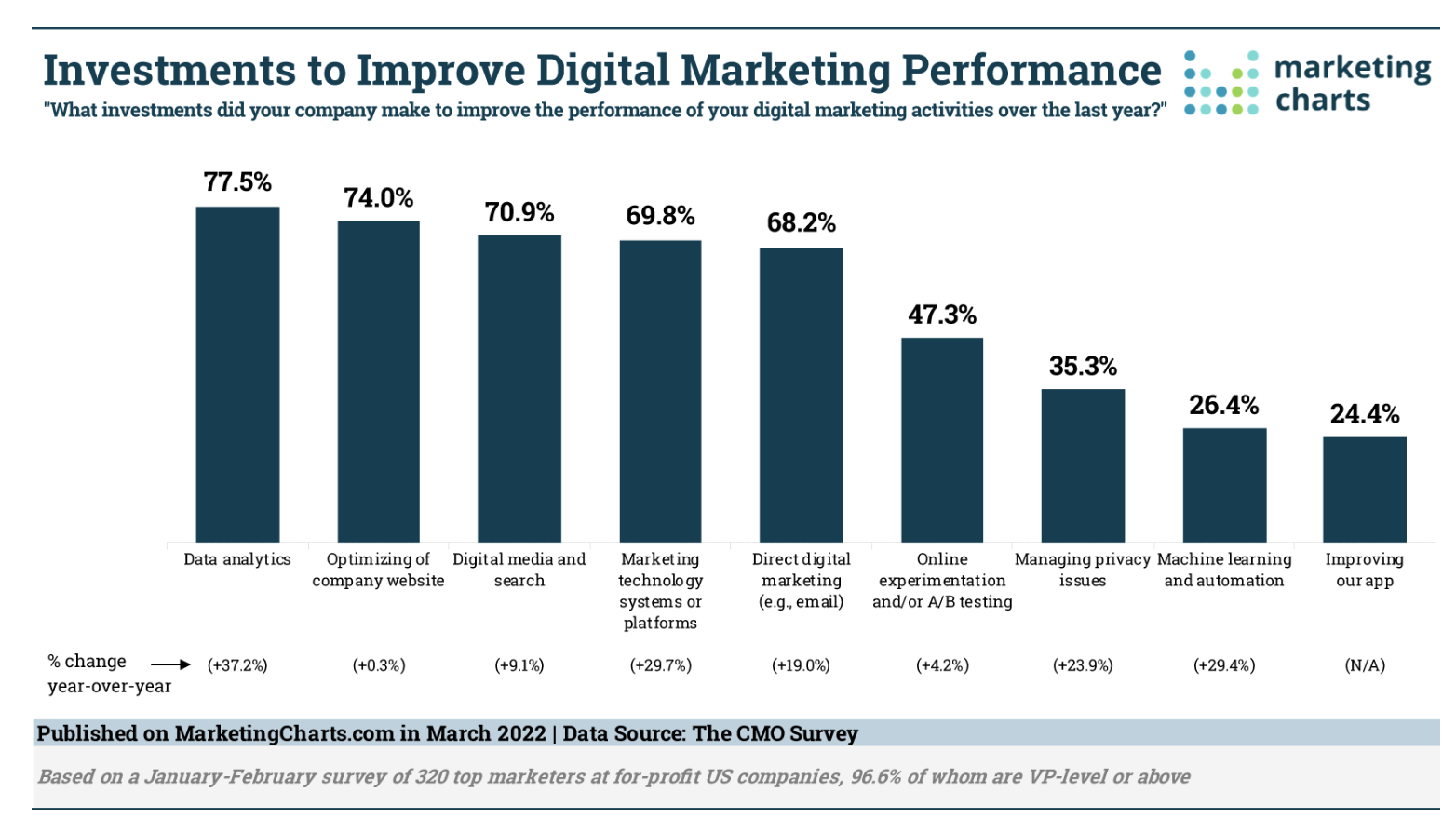How to Test and Scale Your Cross-Channel Marketing Programs for Maximum Impact
All marketers want a “crystal ball” to find out how effective their marketing campaigns are likely to be before launch. After all, every marketing department has only so much time, and so many resources available to allocate to new marketing campaigns, so each one has to be optimized for maximum impact. But how can a marketer know which marketing campaigns are likely to perform the best and where to put their money?
Testing.
Testing your campaigns gives you the ability to scale them to a larger audience and ensure your media spend is driving ROI. This testing can be carried out one campaign or channel at a time, or even better, with a holistic view of all your channels at once via a unified marketing measurement and testing strategy. Let’s explore common means of testing to create optimal marketing scale below.
Why is Testing Before Scaling So Important?
Why is testing so important, anyway? Isn’t it costly? Doesn’t it just slow down the process of getting your product or service out into the market, and consequently slow down revenue generation?
The answer is “no”.
Continuous experimentation by testing and measuring your marketing strategy before, during, and after launch, especially across channels using a closed-loop omnichannel marketing measurement tool, are not just inconvenient delays to your plans. They’re vital steps that ensure the success of your next marketing campaign.
Accurate testing not only improves overall ROI, but also plays a pivotal role in optimizing media spend and preventing waste by helping marketers allocate advertising budgets to the most lucrative channels. This is especially valuable when planning a far-reaching cross-channel marketing campaign where the complexity of the task makes it hard to track how each ad dollar is performing, and easy to let media spend trickle away to sub-optimal channels.

Here are a few other reasons why it’s important to test before scaling:
Reduce Wasted Spend on Underperforming Marketing Channels
It may be classic and well-worn advice, but starting small is always advisable when launching a cross-channel marketing campaign or preparing to scale to a larger one.
Testing each campaign, whether it be PPC, social media, or television, especially with the help of a unified measurement strategy, actually helps reduce waste by ensuring you’re targeting the right audience via the right channels and using the right messaging from the start.
As the famously sage statesman Benjamin Franklin once said, “Haste makes waste”, and that’s never been more true than here. Spending a few weeks or a small percentage of your budget on testing and optimization can save your organization months of time and tens of thousands of dollars in labor costs and ad spend down the road.
Create Highly-Targeted Audiences for Optimal Conversion
In a marketing world saturated with general knowledge and poorly-targeted marketing materials, it’s the organization that can effectively target its “perfect niche” that wins.
Testing campaign parameters such as ad creative, copy, channels, and audiences allows marketing teams to “get inside” the heads of their consumers through real-world interactions. As a result, marketers can predict with greater accuracy which forms of marketing will lead to the greatest conversion.
In an increasingly cookieless world, where pre-targeted audiences gleaned from third-party data are growing rarer and rarer, it’s more important than ever for marketing teams to find their own methods of accurately targeting consumers.
Make Decisions Based on Real-World Data
Harkening back to that “crystal ball” from earlier, if marketers aren’t searching for a more certain way of determining which channels and strategies will appeal to their target audience, it’s often because they think they already know.
Experienced marketers are prone to the trap of “certainty” built up over their years of industry knowledge. They have a tendency to feel they don’t need solutions to modern challenges like multi-channel attribution. They prefer to rely on their own, albeit fallible, knowledge to accurately attribute the success of their cross-channel campaigns.
But, as we all know, the world is changing every day: algorithms shift, privacy regulations are enacted, third-party data becomes more scarce and attribution becomes dubious as a result.
What worked yesterday isn’t guaranteed to work today, and state-of-the-art solutions such as unified marketing measurement (UMM) and privacy-compliant person-level data are often the only ways to know for sure what today’s consumer wants. Those who skip over the critical steps of testing and measurement, no matter how experienced they are, are almost certainly headed for a rude awakening when their “sure thing” turns out to be a flop, and is exposed as the mere conjecture it really was.
What Methods Can Marketers Use to Test and Scale Marketing Campaigns?

The formulas successful marketers use for their testing can be as varied as the prize-winning fudge recipes at the county fair, ranging from bare-bones simplicity to meticulous and extravagant. Thankfully, for confused and overwhelmed marketers looking for “something that works” there are a few tried-and-true methods that the most experienced marketers use regularly.
Advanced A/B Testing
While A/B testing has now become a buzzword thrown around by every newbie with their first ad account, it was once a popular version of testing campaign materials on a real, live audience of potential buyers.
A/B testing involves creating two versions of the marketing asset in question, varying the copy, imagery, or targeting for two different versions, an “A” and a “B” version. Theoretically, each of these versions is then sent to different consumers within the organization’s target audience, either through the help of an algorithm, such as on social media.
The problem with this method is inherent in its approach: the use of algorithms to accurately “split” the A and B versions into identical, but separate, audience groups. Algorithms, by their nature, are designed to send ads and posts to the people their mechanical brains deem most likely to click, watch, open, or share them, regardless of a marketer’s wishes. This, unfortunately, tends to create skewed results that show not the effectiveness of the ad copy or creative when producing engagement data, but the effectiveness of the algorithm in getting someone, anyone, to click on or engage with it.
Fortunately, advancements in marketing technology have given us a method that could be called “advanced A/B testing”: Unified Marketing Measurement (UMM). This approach combines a constellation of marketing analytics and measurement models to create a complete view of an organization’s entire marketing program at once.
Instead of requiring painstaking and tedious channel-by-channel testing and manual analysis of the results, UMM platforms aggregate all available campaigns and their results into one overarching view for ‘always on’ closed-loop experimentation at scale. This gives marketers the visibility they need to accurately allocate media spend, choose effective marketing materials and plan for upcoming campaigns all in one place, continuously.
Omnichannel Attribution
Building on the effectiveness of unified marketing measurement, omnichannel attribution gives modern marketers a “leg up” on the testing and optimization methods of the past.
An effective omnichannel attribution strategy takes the guesswork out of determining which of your many campaigns a successful conversion came from. Similar to how unified marketing measurement tracks KPI’s across a myriad of channels and strategies, omnichannel attribution offers insight into how a viewer was ultimately converted to a buyer, even if they interacted with multiple campaigns across several channels.
This kind of holistic attribution was a challenge for marketers in the past when strategies such as last-touch attribution created partial and often inaccurate conclusions about exactly which campaign ultimately created a conversion. Thankfully, omnichannel attribution now allows marketers to see which elements of their campaigns worked, and how, to allow them to confidently launch and scale into even larger positive results.
Predictive AI (Artificial Intelligence) or ML (Machine Learning)
While some marketers may view the conversations around advanced A/B testing, omnichannel measurement, and artificial intelligence or machine learning as an “either/or”, where they have to make a choice between one or the other, it’s really a “both/and”, with all methods enhancing and compounding the results of the others.
Machine learning and artificial intelligence can both be used to aggregate and analyze the insights gleaned from unified marketing measurement and omnichannel attribution to create predictive models of consumer behavior to optimize upcoming cross-channel marketing campaigns.
These predictive models and future-focused recommendations allow marketers to confidently step into their next campaign, or scale a current one, backed by data-driven decisions based on real-world info.
Both AI and ML can also both be used at the start of the testing process itself to automate the testing process and produce results faster and more efficiently, creating more highly-targeted campaigns more quickly for continuous optimization. This, in turn, can increase conversion rates and speed up revenue generation, with less time spent in trial-and-error and less media spend wasted on ultimately ineffective campaigns.
How Does Testing Help Marketers Scale Cross-Channel Marketing Campaigns?
Now that we’ve looked at the “how” of testing and measuring, it’s time to look at the “why”. After all, even the most dedicated marketing team obsessed with data and testing for their own sake eventually has to show the value of all that data and analysis to key stakeholders. How do testing and analysis benefit your organization’s bottom line?
Real Data + Campaign Success = Increased Budgets
As much as we might like to think otherwise, no marketing budget is unlimited and no marketing strategy can include every idea, all at once. This means that some hard decisions will likely need to be made about which campaigns and methods will create a real ROI in the allotted time period.
How will that winning campaign be chosen? You guessed it: through data.
Luckily, with a disciplined and detailed testing and optimization program in place to weigh the value of each new marketing campaign, that data will be right at your fingertips, allowing you to prove the value of your brilliant new campaign and gain buy-in from other departments and key stakeholders.
The good news? Newer tools are designed to pick up signals from one week tests with spend levels of only around $1K - $10K.
Strategic Analysis to Guide Future Campaigns
The rigorous analysis and data collection required by an effective testing program create a wealth of hard data and actionable insights for not just this current campaign, but many campaigns to come, multiplying the benefits you’ll glean.
By having real-world data tailored to your target audience already on hand, the optimization process will continually get easier and easier, saving you time and money and creating exponentially better results as time goes on.
Faster Campaign Expansion for Higher Sales and Better Results
As the old saying goes, “Nothing succeeds like success”, and nowhere is that more true than in marketing. Building a solid basis of past successful campaigns through a meticulous analysis and testing process creates confidence both within marketing teams and among other key stakeholders which makes it easier to quickly build and scale future campaigns.
How Marketing Evolution Can Help Marketers Make Better Testing and Scaling Decisions
Whether you opt for basic testing before launching a new campaign, or your organization prefers to dive deep into the data from multiple channels and many past campaigns before considering any new marketing strategy, one thing’s for sure: you’ll need reliable insights generated from market representative data to get the best possible results.
That’s where Marketing Evolution comes in. With our suite of innovative person-level marketing data solutions, including Mevo, our signature SaaS platform for planning, measurement, reporting, and insights, we can help ensure all your test marketing efforts are based on a solid foundation of up-to-date insights, at scale!

